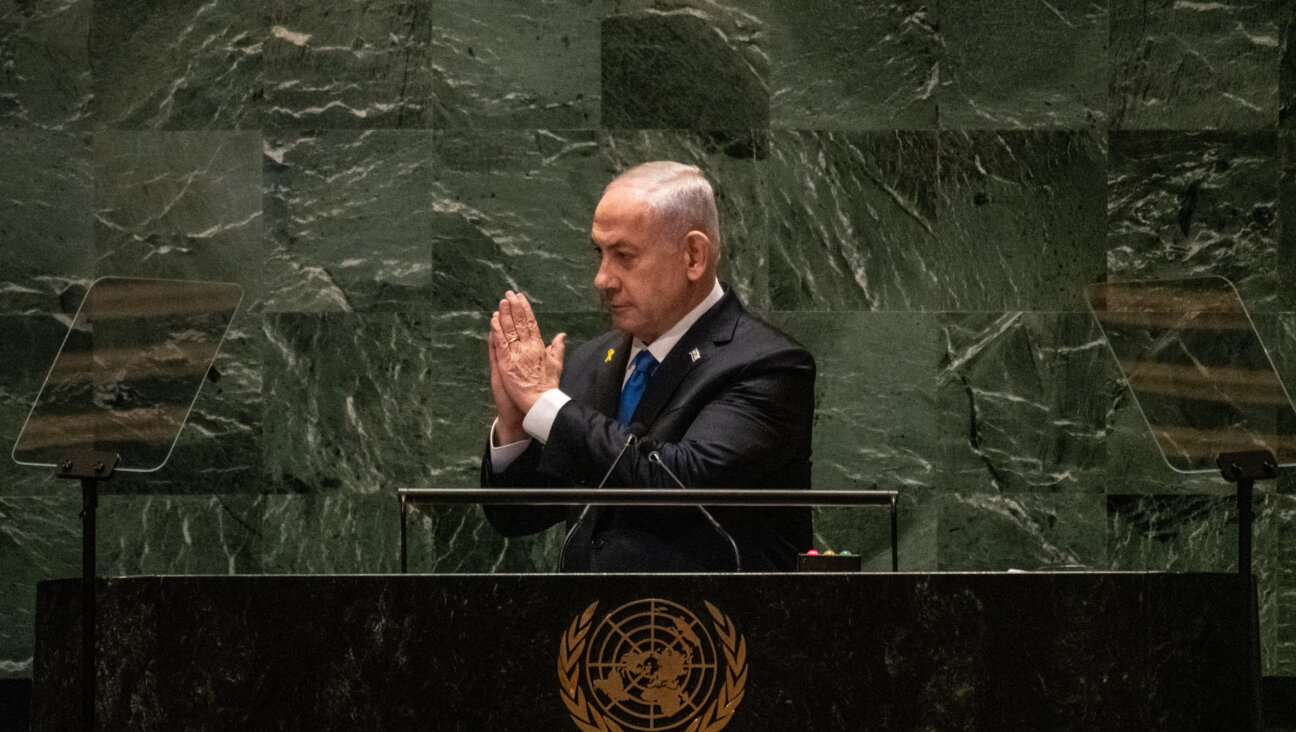The One-and-a-half-state Solution
Anyone who has followed the Israeli-Palestinian conflict in recent decades knows that mainstream thinking on both sides has evolved considerably, to a point where Jerusalem and Ramallah (and Washington, too) endorse a two-state solution. The advocates of Greater Israel or Greater Palestine — a single Israeli or Palestinian state between the Jordan River and the Mediterranean Sea — are generally understood to be minorities: the ideological settlers and extreme right wing in Israel, and the Hamas diehards (no longer even the entire Hamas leadership) among Palestinians.
There are, of course, infinite variations on the one-state/two-states themes in both camps. A few Israelis on the right still believe that “Jordan is Palestine.” A tiny camp of “post-Zionists” on the Jewish left continues to advocate a multicultural “state of all its citizens.”
A significant number of Palestinian intellectuals, for their part, argue that Israeli greed for land in the West Bank and around Jerusalem precludes the formation of a viable Palestinian state and that the only alternative is “one man, one vote” — code for a one-state solution. Israel’s unilateral withdrawal from Gaza and the northern West Bank softened this approach, at least temporarily, by proving that settlements need not be permanent.
All the while, Prime Minister Sharon pays lip service to a stillborn “Road Map” — which has proven incapable of producing a viable Palestinian state, let alone a temporary one — even as he launches Israel on the road to unilateralism.
The success of the Gaza withdrawal, however, has produced yet another Israeli-Palestinian model. It is tentatively associated with strategic thinkers and intellectuals usually identified with the Israeli center and moderate right, such as outgoing National Security Adviser Giora Eiland — the camp whose support for the fence and disengagement, and in general for unilateralism, helped create the large public majority that persuaded Ariel Sharon to move in that direction.
It is more a byproduct of the success of disengagement and the fence — moves that themselves originated as tactical improvisations — than the outcome of an orderly process of strategic reasoning. It is a way of coming to terms with the emerging new reality between Israelis and Palestinians.
It could be called “one and a half states,” but that description is definitely inadequate.
This is not a “solution,” not an exercise in conflict resolution, but rather an approach based on the notion that the best we can do for the time being is conflict management. According to this concept, Israel continues to withdraw from Palestinian population centers in the West Bank, essentially in order to maintain its integrity as a Jewish state and reduce the friction and corrupting influence of occupation, and because the fence offers adequate passive defensive alternatives to an out-and-out physical military presence.
Unilateral withdrawal also reflects the belief of a majority of Israelis that there is no serious negotiating partner on the other side with whom to close a final status deal that resolves Palestinian territorial and refugee demands in an acceptable manner. While Palestinian Authority President Mahmoud Abbas sincerely wants peace, he is not strong enough to deliver, his views on the right of return are not acceptable to most Israelis, and in any case he insists on enfranchising rather than confronting his own hardline Hamas refusalists, thereby reducing yet further the likelihood of productive negotiations as an alternative to Israeli unilateralism.
But if Abbas is incapable of getting the Palestinian act together, then whatever remains on the Palestinian side of the fence after additional Israeli withdrawals will be incapable of functioning even unilaterally as a stable “state with temporary borders,” not to mention a viable sovereign Palestinian homeland. In other words, the emerging Israeli approach may indeed represent a successful Israeli step back from the brink of an apartheid or “South African” reality that even Sharon was warning about a year ago, and a step toward reinforcing the Zionist aspiration of a Jewish and democratic state. But the reality on the Palestinian side is likely to approximate chaos, with Gaza and the West Bank in danger of functioning as separate entities and P.A. rule sporadic and problematic at best.
How to “manage” what remains of the conflict under these circumstances? Egypt, the thinking goes, has already shown the way by exercising influence along its border with Gaza and working with Palestinian political movements and security forces there. Cairo has to be encouraged to do more — in effect, to act as a caretaker for Gaza — while Jordan has to be invited to play a similar role in the West Bank.
By reverting, albeit partially and temporarily, to the prevailing regional political reality from 1949 to 1967, stability can be generated and the affairs of the Palestinians managed not by Israel but by fellow Arabs — pending the emergence of something better, something that looks like a “solution.” And in the Arab-Israeli conflict, as we know, temporary measures frequently take on the trappings of permanent arrangements.
This approach is almost certainly too unrealistic to work. For one, Jordan, with its own demographic security problems, is even more hesitant than Egypt to once again become the caretaker of Palestinian lands and population. (But suggest to Jordanian officials that Egypt play a more forceful role in the West Bank as well as Gaza, and you will be reminded indignantly that the West Bank is “Jordanian,” not Egyptian.) It is sufficient to observe the recent fate of the Syrian occupation of Lebanon to appreciate the understandable hesitation in Cairo and Amman to become deeply re-involved in the affairs of their problematic Palestinian neighbor.
Then, too, Egypt has yet to prove that it really can contribute to stability and a reduction of violence in Gaza. Finally, unless Israeli unilateral withdrawal encompasses the Jordan Valley and the Arab parts of Jerusalem, and unless Israel agrees to a workable safe passage arrangement between Gaza and the West Bank, Palestinians will be able to argue persuasively that it is the absence of territorial viability that is preventing them from creating a working state — not some national character defect that the Israelis have ingeniously detected.
All other things being equal, and assuming Ariel Sharon continues in office, more unilateral withdrawal and more chaos on the Palestinian side could well be the direction we are heading. Both Israel and Palestine will benefit from further reductions in settlements and occupation. But in the long term — nay, even the medium term and perhaps the short term — the Jewish state needs a viable Palestinian state by its side if it is to remain Jewish and if the neighborhood is to achieve some semblance of stability.
If Sharon forgets that, then Cairo and Amman, which also require Palestinian stability, will remind him. Hopefully, so will George W. Bush.
Yossi Alpher, a former senior adviser to Prime Minister Ehud Barak and former director of the Jaffee Center for Strategic Studies, is co-editor of the bitterlemons family of online publications.
A message from our CEO & publisher Rachel Fishman Feddersen

I hope you appreciated this article. Before you go, I’d like to ask you to please support the Forward’s award-winning, nonprofit journalism during this critical time.
At a time when other newsrooms are closing or cutting back, the Forward has removed its paywall and invested additional resources to report on the ground from Israel and around the U.S. on the impact of the war, rising antisemitism and polarized discourse.
Readers like you make it all possible. Support our work by becoming a Forward Member and connect with our journalism and your community.
— Rachel Fishman Feddersen, Publisher and CEO





















